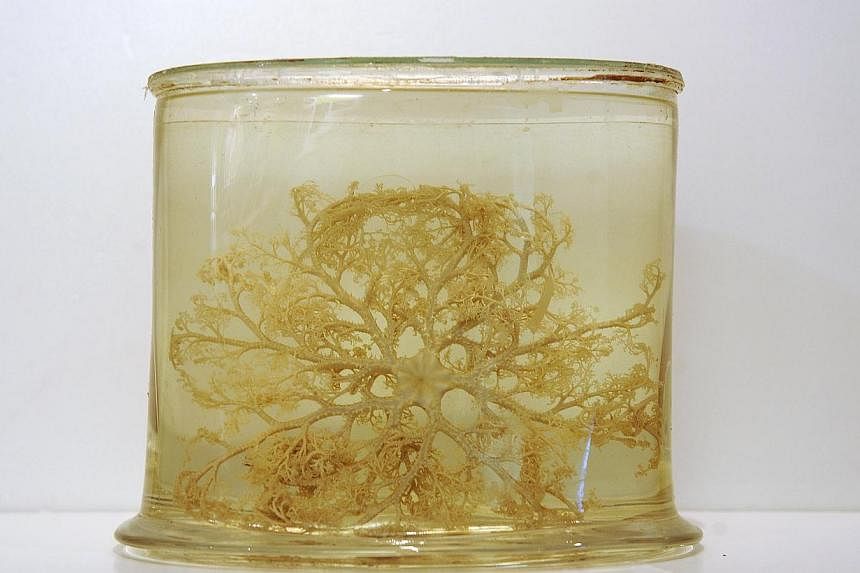SINGAPORE - When Singaporean Ramlan Saim caught a basket star off Pulau Ubin last month, he thought he had reeled in a bunch of seaweed.
But when the creature, which seemed to have more than a hundred arms, started to move "like an alien", he took a video of it which later went viral on Facebook, with almost eight million views and close to 130,000 likes.
Here are five things you need to know about the peculiar-looking sea creature:
1. What is a basket star?
A basket star is a type of echinoderm, with a system of highly-branched, fleshy arms that resemble a basket.
Echinoderms are marine invertebrates whose bodies usually have a radial symmetry, with five or more arms symmetrically arranged around a central disc.
Some of the 177 species of basket stars can have really long arms, and measure more than 0.9m wide.
Together with the brittle star, the basket star belongs to the taxonomic class ophiuroidea, and is a distant relative of sea stars, sea urchins and star fish.
2. Where is it found?
This creature occupies a wide range of habitats around the world, from cold to warm waters. Most of them live deep under the sea, but some smaller ones also dwell in shallow tide pools.
In Singapore, they can be found in some intertidal areas, clinging to seagrass, coral rubble or sea fans.
According to Wild Singapore, only one species of basket star - Euryale aspersa - is listed here, and it is possibly endangered.
3. How and what do they eat?
Unfurling their intricate network of dexterous arms, these animals form a "basket" to catch their prey.
They coil their wriggly tendrils around their victims, which can be small mollusks and crustaceans, which they then transport to the underside of the central disc, where the mouth is.
Some species also simply filter-feed plankton and organic matter from the water.
Basket stars have no anuses and excrete waste via their mouths.
4. What else do they do to survive?
Like all echinoderms, basket stars have a water vascular system instead of blood.
By pumping water into their bodies, they are able to move, breathe and transport food and waste.
When threatened or disturbed, these flexible creatures can rein in their tentacles and curl themselves into a tight ball.
5. How do basket stars reproduce?
These organisms can reproduce both sexually and asexually.
They can either release eggs and sperm into the water, or divide their bodies and regenerate themselves.
Sources: About Education, Real Monstrosities, Wild Singapore, Echinoblog


